Tiny Houses
How Do You Finance a Tiny House

As someone who dreams of living in a cozy, pint-sized paradise, I often wonder how to make that dream a reality. How do I finance a tiny house?
In this article, we will explore various financing options, from personal savings to loans and even creative strategies. Join me on this journey as we navigate the world of tiny house financing, uncovering the pros and cons, and finding the best path to turn our small space dreams into a cherished reality.
Key Takeaways
- Personal financing options such as utilizing personal savings, withdrawing from retirement accounts, and consulting with a financial advisor are common methods for financing a tiny house.
- Tiny house loans offer flexibility in repayment terms and the opportunity to build credit history, but they often come with high interest rates and limited availability of lenders.
- Crowdfunding can be a viable option for financing a tiny house, as it allows individuals to gather funds from a wide audience and benefit from community support. However, there is no guarantee of reaching the funding goal.
- RV loans can be used to finance a tiny house, but it is important to research lenders specializing in RV loans, compare interest rates and loan terms, and consider the influence of credit score and financial history.
Exploring Personal Savings as a Financing Option
I can use my personal savings as a financing option for a tiny house. When exploring alternative financing options, utilizing retirement funds can be a viable choice. Many individuals have built up a significant amount of savings over the years, and tapping into those funds can provide a means to finance a tiny house.
By using personal savings, individuals can avoid taking on debt and the associated interest payments. This option allows for greater financial freedom and flexibility, as there are no strict repayment schedules or loan terms to adhere to.

However, it’s crucial to consider the long-term implications of using retirement funds, as withdrawing from these accounts may have tax consequences and can impact one’s future financial security. It’s advisable to consult with a financial advisor to determine the best course of action when utilizing personal savings for a tiny house.
Understanding the Pros and Cons of Tiny House Loans
One major advantage of tiny house loans is that they provide individuals with the opportunity to secure financing for their dream home. However, it is important to weigh the pros and cons before deciding on this financing option. Here is a table outlining the advantages and disadvantages of tiny house loans:
| Pros | Cons |
|---|---|
| Provides financing for a dream home | High interest rates |
| Allows for flexibility in repayment terms | Limited availability of lenders |
| Can help build credit history | Potential difficulty in getting approved |
While tiny house loans offer the advantage of making homeownership possible for those who may not have enough savings, there are also some drawbacks to consider. High interest rates can make the loan more expensive over time, and finding lenders who specialize in tiny house loans can be challenging. Additionally, getting approved for a loan may be more difficult compared to traditional mortgages. As with any financial decision, it is essential to carefully evaluate the pros and cons and consider alternative financing options for tiny houses.
Crowdfunding Your Tiny House: Is It a Viable Option
Crowdfunding your tiny house can be a viable option to gather funds for your dream home. In recent years, crowdfunding has gained popularity as an alternative funding method for various projects, including tiny house construction. This approach allows individuals to reach out to their communities and beyond, seeking support for their housing endeavors.

One of the key advantages of crowdfunding is the potential for community support. By sharing your project on crowdfunding platforms and social media, you can reach a wide audience of potential backers who are passionate about tiny houses or sustainable living. These individuals may be willing to contribute financially to help you achieve your goal.
Furthermore, crowdfunding offers a unique opportunity to showcase your creativity and vision. With compelling storytelling and engaging visuals, you can capture the attention and interest of potential backers, inspiring them to invest in your tiny house project.
However, it’s important to recognize that crowdfunding success isn’t guaranteed. It requires careful planning, effective marketing, and a compelling value proposition to attract backers. Additionally, there’s no guarantee that you’ll reach your funding goal, and you may need to consider alternative options if crowdfunding falls short.
Navigating the World of RV Loans for Your Tiny House
Securing an RV loan for my tiny house was a crucial step in financing my dream home. When it comes to alternative financing options, RV loans are a popular choice for many tiny house enthusiasts. Finding affordable RV loans requires some research and careful consideration.
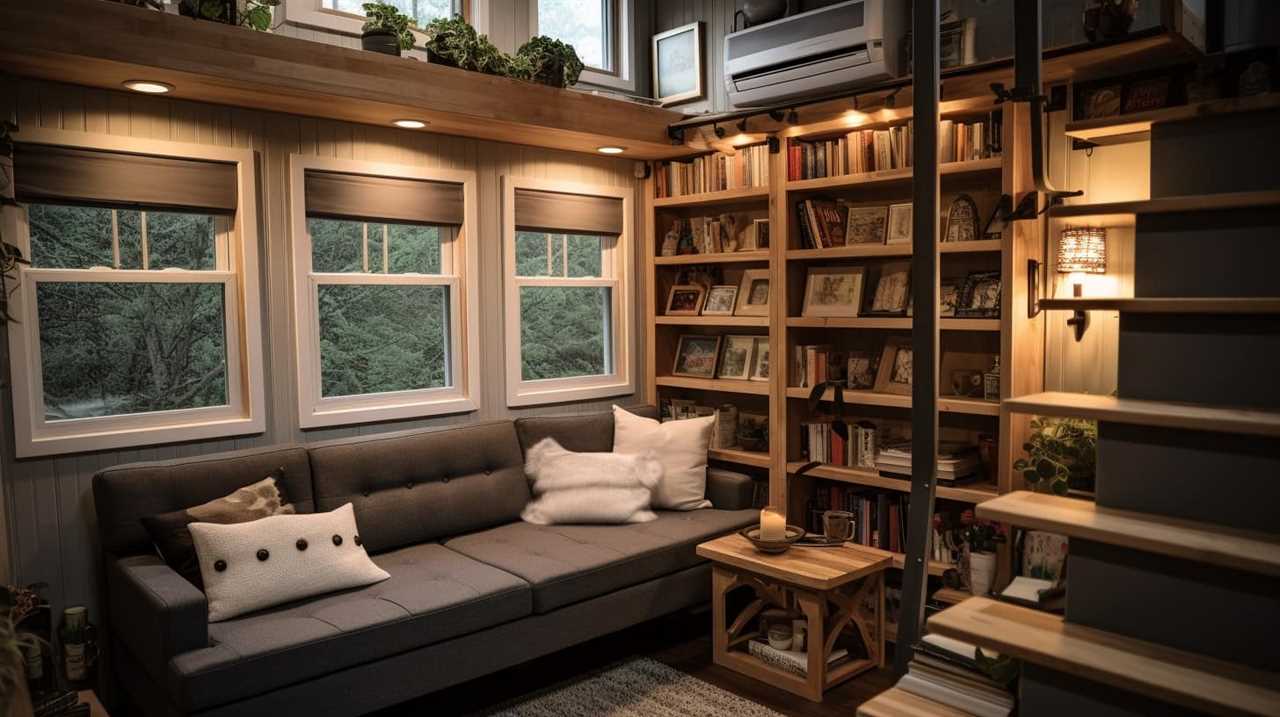
One of the first things I did was to explore different lenders that specialize in RV loans. I compared interest rates, loan terms, and requirements to ensure I was getting the best deal possible. Additionally, I made sure to have a good credit score and a solid financial history, as this greatly influences the loan approval process.
It’s important to note that not all lenders offer RV loans for tiny houses, so it’s essential to find those who do. By taking the time to navigate the world of RV loans, I was able to secure the financing I needed to make my tiny house dreams a reality.
Creative Financing Strategies for Your Tiny House Dream
Exploring alternative financing options became crucial in pursuing my tiny house dream. When traditional lending institutions didn’t offer suitable solutions, I had to think outside the box and consider creative strategies.
Here are some alternative funding options to consider:

-
Personal Loans: I researched online platforms that connect borrowers with individual lenders who are willing to fund unconventional projects like tiny houses. This allowed me to secure a loan with flexible terms and competitive interest rates.
-
Crowdfunding: I created a compelling campaign on crowdfunding platforms specifically tailored for tiny house projects. By sharing my story and vision, I was able to attract support from like-minded individuals who believed in my dream.
-
Negotiating with Local Banks: I approached local banks and credit unions, explaining the unique nature of tiny house living and emphasizing the environmental and financial benefits. Some institutions were open to discussing customized loan options that better suited my needs.
Frequently Asked Questions
Are There Any Grants or Government Programs Available to Help Finance a Tiny House?
There are grants and government programs available to help finance a tiny house. Additionally, crowdfunding can be a viable option for raising funds. These options provide opportunities for individuals to obtain financial assistance for their tiny house projects.
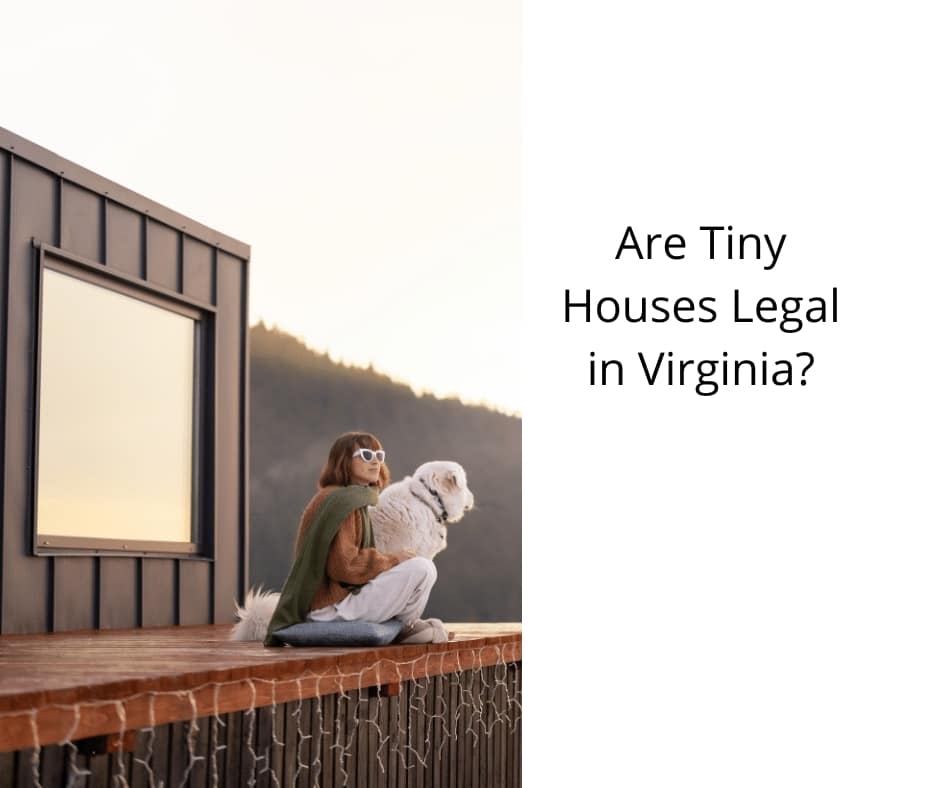
Can I Use a Personal Loan or Credit Card to Finance My Tiny House?
Sure, I can use a personal loan or credit card to finance my tiny house. There are several personal loan options available, and alternative financing methods can also be explored.
What Are the Tax Implications of Financing a Tiny House?
Tax deductions and financial planning are essential considerations when financing a tiny house. It’s crucial to understand the potential tax implications and seek professional advice to ensure you make informed decisions about your finances.
Can I Rent Out My Tiny House to Help Generate Income and Offset the Cost of Financing?
Renting out my tiny house is a smart move to generate income and offset financing costs. It’s one of the alternative financing options available. By doing so, I can maximize the benefits of my investment.
Are There Any Special Insurance Requirements for Financing a Tiny House?
There are special insurance requirements when financing a tiny house. It is important to have coverage for both the structure and contents. The advantages of financing a tiny house include lower costs and increased flexibility.
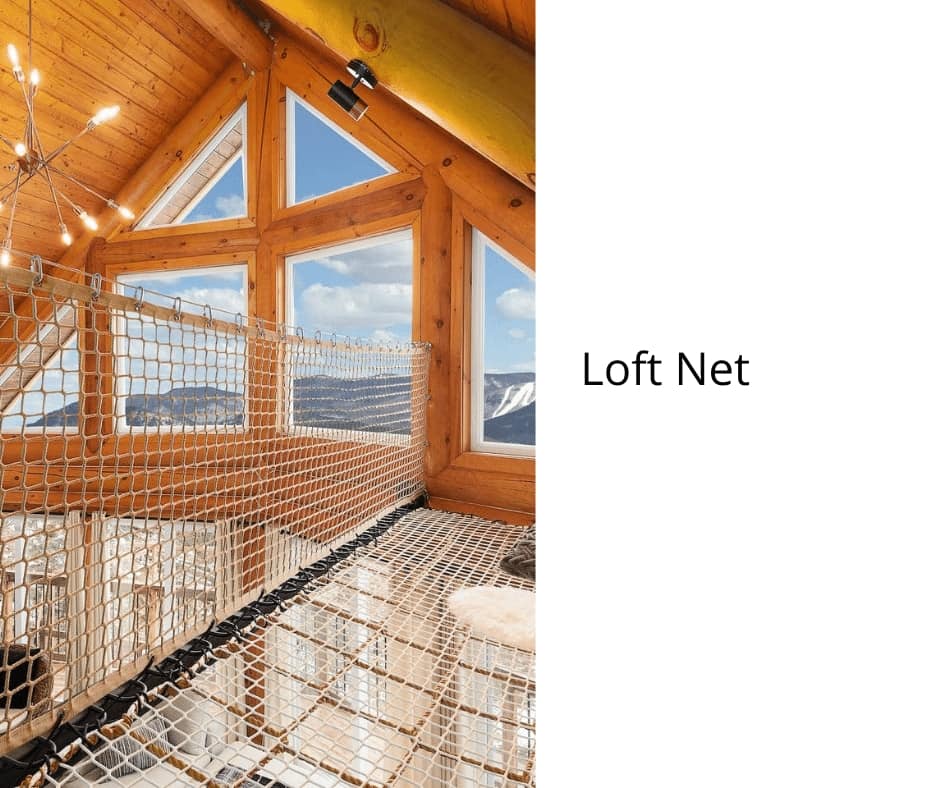
Conclusion
In conclusion, financing a tiny house requires careful consideration of various options. Personal savings can be a reliable choice, allowing individuals to fund their dream home without incurring debt.
However, for those in need of additional financial support, exploring tiny house loans or crowdfunding can be viable alternatives. Additionally, RV loans offer flexibility for those opting for a mobile tiny house lifestyle.
Ultimately, the choice of financing will depend on individual circumstances and preferences. For example, Sarah, a freelance writer, successfully financed her tiny house through a combination of personal savings and a small loan from a local credit union.
I’m Theodore, and I love tiny houses. In fact, I’m the author of Tiny House 43, a book about tiny houses that are also tree houses. I think they’re magical places where imaginations can run wild and adventures are just waiting to happen.
While tree houses are often associated with childhood, they can be the perfect adult retreat. They offer a cozy space to relax and unwind, surrounded by nature. And since they’re typically built on stilts or raised platforms, they offer stunning views that traditional homes simply can’t match.
If you’re looking for a unique and romantic getaway, a tree house tiny house might just be the perfect option.
Tiny Houses
How Is Tiny House Living Beneficial for a Sustainable and Minimalist Lifestyle?

Are you prepared to streamline your life and adopt a sustainable and minimalist lifestyle?
Join us on a journey to discover the practical benefits of tiny house living. With our allusion to the joys of downsizing, we’ll explore how living in a tiny house can help you reduce your environmental impact and achieve a more intentional way of life.
From finding the perfect spot to navigating building codes, we’ll provide you with the knowledge and practical tips you need to embark on this fulfilling journey.
Key Takeaways
- Tiny house living promotes sustainable design and minimizing waste.
- Downsizing creates space for what truly matters in life, prioritizing experiences and relationships.
- Financial benefits of tiny house living include reduced expenses and the ability to save money.
- Creative storage solutions and multi-functional furniture maximize space and functionality in a tiny house.
The Practical Benefits of Tiny House Living
We have found that one of the most practical benefits of tiny house living is in the ability to maximize limited space. Space optimization is essential when living in a small area, and tiny houses excel in providing clever solutions to make the most out of every square inch. From multi-functional furniture to creative storage solutions, every aspect of a tiny house is designed to serve a purpose and maximize functionality. This not only allows for a clutter-free and organized living space but also encourages a minimalist lifestyle.
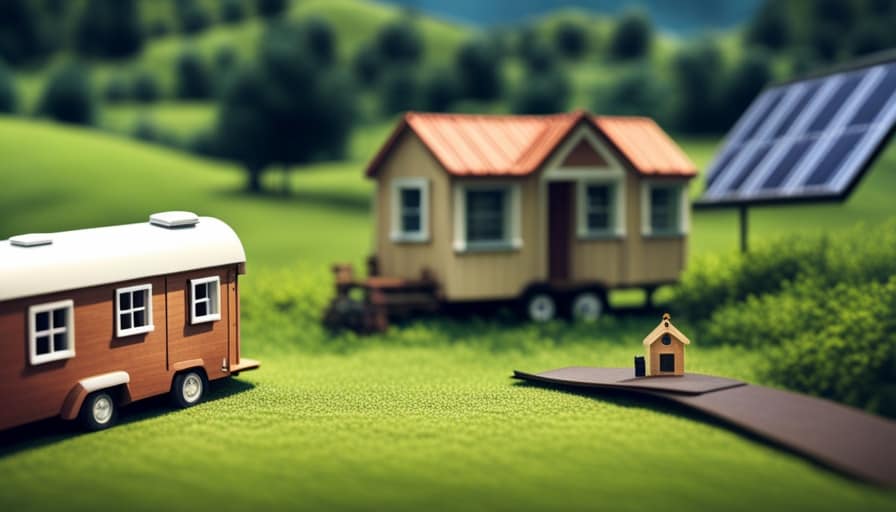
Another significant advantage of tiny house living is the financial freedom it offers. By reducing expenses such as mortgage payments, utility bills, and maintenance costs, living in a tiny house can save a substantial amount of money. This financial relief can allow individuals and families to allocate their resources towards more fulfilling experiences, such as travel, education, or pursuing their passions. In a world where material possessions often weigh us down, tiny house living can provide an opportunity to prioritize experiences over belongings and embrace a more sustainable and minimalist lifestyle.
The Process of Downsizing for a Minimalist Lifestyle
The process of downsizing for a minimalist lifestyle can be a transformative experience. By minimizing material possessions, we open ourselves up to a multitude of benefits that come with embracing minimalism.
When we let go of unnecessary belongings, we create space for what truly matters in our lives. This process allows us to prioritize experiences and relationships over material possessions, leading to a greater sense of fulfillment and contentment.
Moreover, downsizing helps us become more intentional with our consumption habits and reduces our impact on the environment. By choosing quality over quantity and focusing on what truly brings us joy, we can simplify our lives and reduce waste.

Ultimately, the process of downsizing for a minimalist lifestyle empowers us to live more intentionally and align our actions with our values.
Embracing Sustainable Living in a Tiny House
Living in a tiny house allows us to fully embrace sustainable living practices and reduce our ecological footprint. Sustainable design and minimizing waste are key principles in this lifestyle. By maximizing the use of space, tiny houses encourage us to be mindful of our consumption patterns and limit unnecessary material possessions. This not only reduces our impact on the environment but also promotes a minimalist mindset.
In a tiny house, every square inch counts. Furniture and storage solutions are often multifunctional, serving multiple purposes to maximize efficiency. Additionally, sustainable materials such as reclaimed wood, recycled materials, and energy-efficient appliances are commonly used in tiny house construction. These choices contribute to a more eco-friendly lifestyle.
To further illustrate the benefits of sustainable living in a tiny house, let’s look at the following table:

| Sustainable Design | Minimizing Waste |
|---|---|
| Use of renewable energy sources | Composting toilet |
| Rainwater harvesting system | Recycling and upcycling |
| Passive solar design | Minimal packaging |
| Efficient insulation and ventilation | Reduction of food waste |
| Use of low-flow fixtures | Avoidance of single-use plastics |
Embracing sustainable living in a tiny house not only allows us to live more consciously but also sets an example for others to follow. It is a practical and fulfilling way to contribute to a more sustainable future for ourselves and the planet.
Spot Selection: Finding the Perfect Location for Your Tiny House
Finding the ideal spot for our tiny house involves careful consideration of factors such as zoning regulations, access to amenities, and proximity to nature.
When it comes to off-grid living, maximizing self-sufficiency in a tiny house requires finding a location that allows for alternative energy sources, such as solar panels or wind turbines.
Additionally, being part of a tiny house community can provide a sense of belonging and support. Joining a tiny house village allows for shared resources, collaboration, and the opportunity to connect with like-minded individuals.

It’s important to research and visit different locations to ensure they align with our values and lifestyle goals. By selecting the perfect spot for our tiny house, we can create a sustainable and minimalist lifestyle that fosters self-sufficiency and community involvement.
In the next section, we’ll explore building codes and eco-friendly materials for tiny house construction.
Building Codes and Eco-Friendly Materials for Tiny House Construction
For our tiny house construction, we need to research and comply with building codes, as well as choose eco-friendly materials to ensure sustainability and minimize our environmental impact.
Building code regulations vary from one location to another, so it’s important to familiarize ourselves with the specific requirements in our area. These regulations typically cover aspects such as minimum square footage, ceiling heights, stair dimensions, and electrical and plumbing systems. By adhering to these codes, we can ensure the safety and structural integrity of our tiny house.

Additionally, opting for eco-friendly materials is crucial for an energy-efficient design. Materials such as reclaimed wood, recycled insulation, and low VOC paints can significantly reduce our carbon footprint while also promoting a healthier living environment.
It’s essential to prioritize sustainability and minimize our impact on the planet when constructing our tiny house.
Frequently Asked Questions
How Much Does It Cost to Build a Tiny House?
Building a tiny house can cost anywhere from $10,000 to $100,000, depending on factors like size, materials, and location. Financing options such as personal loans or RV loans can help make this sustainable and minimalist lifestyle more accessible.
What Are the Legal Requirements for Living in a Tiny House?
Legal requirements for living in a tiny house include navigating through various zoning regulations and complying with local building codes. It’s important to research and understand these restrictions to ensure a smooth and legal transition into tiny house living.

Can I Still Have a Comfortable Lifestyle in a Tiny House?
Yes, we can still have a comfortable lifestyle in a tiny house by focusing on home organization and maximizing space. With thoughtful design and efficient use of resources, we can create a cozy and functional living environment.
How Do I Handle Waste Management in a Tiny House?
When it comes to waste management in a tiny house, we’ve found that composting toilets and recycling solutions are key. These sustainable options allow us to minimize our environmental impact and live a more minimalist lifestyle.
What Are the Long-Term Maintenance Considerations for a Tiny House?
When considering long-term maintenance for a tiny house, it is important to prioritize sustainable design and energy efficiency. Regular inspections, proper insulation, and efficient systems will help ensure the longevity of the home while minimizing environmental impact.
Conclusion
In conclusion, living in a tiny house offers numerous benefits for those seeking a sustainable and minimalist lifestyle.

From the practical advantages of downsizing and simplifying our lives to the embrace of eco-friendly materials and sustainable living practices, tiny house living allows us to lead a more intentional and conscious way of life.
So, if you’re ready to embark on this exciting journey, start exploring the possibilities of tiny house living and experience the fulfillment of a more sustainable and minimalist lifestyle.
I’m Theodore, and I love tiny houses. In fact, I’m the author of Tiny House 43, a book about tiny houses that are also tree houses. I think they’re magical places where imaginations can run wild and adventures are just waiting to happen.
While tree houses are often associated with childhood, they can be the perfect adult retreat. They offer a cozy space to relax and unwind, surrounded by nature. And since they’re typically built on stilts or raised platforms, they offer stunning views that traditional homes simply can’t match.
If you’re looking for a unique and romantic getaway, a tree house tiny house might just be the perfect option.
Prefab Tiny Houses
How Did the Tiny House Movement Start

As I explore the beginnings of the tiny house movement, a fascinating story emerges. It all started during the aftermath of the 2008 Financial Crisis, when a longing for simplicity and financial independence started to grow.
A group of brave souls embraced minimalism, downsizing their lives to the essentials. These innovators paved the way for a sustainable living movement, driven by environmental consciousness and off-grid solutions.
Through the power of social media, their message spread like wildfire, inspiring countless others worldwide.
Key Takeaways
- The Tiny House Movement originated in the aftermath of the 2008 Financial Crisis and was driven by the unstable housing market and the desire for sustainable and affordable housing options.
- Embracing minimalism and downsizing are core principles of the movement, with individuals prioritizing experiences and relationships over material possessions.
- Pioneers and innovators like Jay Shafer challenged traditional norms of home construction by designing unconventional and innovative tiny houses with creative storage solutions and multi-functional furniture.
- The movement promotes sustainable living and off-grid solutions, including utilizing renewable energy sources, rainwater harvesting, and emphasizing a simpler, more sustainable lifestyle.
The Financial Crisis of 2008: A Catalyst for Change
During the financial crisis of 2008, I realized that I needed to make some major changes in my life. The financial implications of the crisis were widespread, affecting not only the economy but also individuals like me.

One of the areas hit hardest was the housing market, which experienced significant fluctuations. Many people lost their homes or faced foreclosure due to the unstable market conditions. Witnessing the devastating impact of the crisis on families and communities made me reflect on my own financial situation.
I realized that I needed to find a more sustainable and affordable housing option. This realization was the catalyst for my interest in the tiny house movement, as I saw it as a way to downsize, reduce my expenses, and regain control of my financial future.
The Simplicity Movement: Embracing Minimalism and Downsizing
I embraced the simplicity movement and downsized my possessions, realizing that I didn’t need as much stuff as I thought. This led me to adopt a minimalist lifestyle and embrace the concept of small space living.
The simplicity movement is all about stripping away unnecessary clutter and focusing on what truly brings joy and meaning to our lives. It encourages us to let go of material possessions that no longer serve a purpose and instead prioritize experiences and relationships.
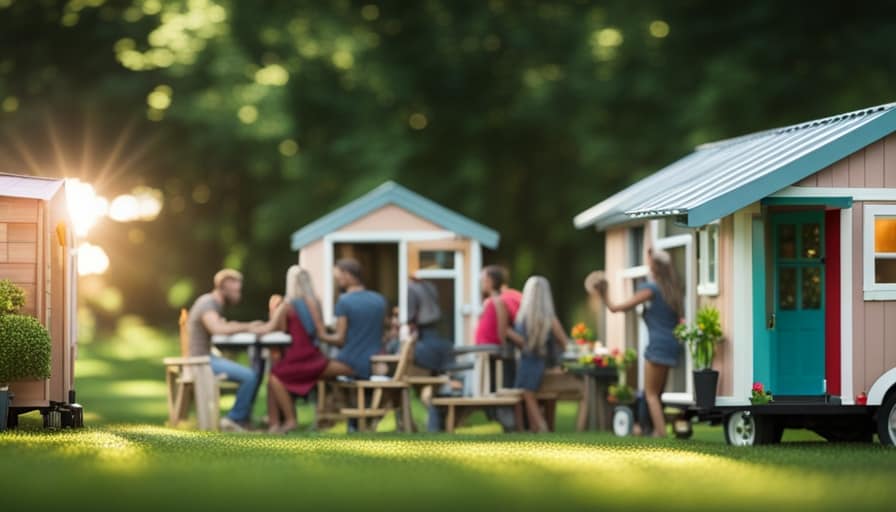
Living in a small space has its challenges, but it also offers numerous benefits. It forces us to be intentional with our belongings and teaches us to appreciate the little things. It also promotes sustainability and reduces our environmental impact.
Innovators and Trailblazers: Pioneers of the Tiny House Movement
While many individuals contributed to the growth of the tiny house movement, one of the key figures was Jay Shafer, who’s often credited as the pioneer of the modern tiny house movement. Shafer, along with other pioneering architects, brought a fresh perspective to the world of housing design by creating unconventional and innovative tiny house designs.
These architects challenged the traditional norms of home construction, focusing on minimalism, sustainability, and efficiency. Through their work, they showed that it was possible to live comfortably in a small space without sacrificing quality of life. Their designs often incorporated creative storage solutions, multi-functional furniture, and clever use of natural light to maximize the limited space available.
These pioneers paved the way for the tiny house movement, inspiring others to embrace simplicity and downsizing as a means of achieving a more sustainable and fulfilling lifestyle.

Sustainable Living: Environmental Consciousness and Off-Grid Solutions
As I delved deeper into the world of tiny houses, I discovered that sustainable living and off-grid solutions have played a significant role in shaping the movement.
Tiny houses are known for their minimal environmental impact and focus on self-sufficiency. By utilizing renewable energy sources such as solar power and rainwater harvesting, tiny homeowners are able to reduce their reliance on traditional utilities. This not only minimizes their carbon footprint but also allows them to live off-grid, meaning they’re completely self-sufficient and don’t rely on public utilities.
Additionally, the smaller size of tiny houses encourages a simpler, more sustainable lifestyle, with less consumption and waste. The emphasis on sustainable living and off-grid solutions is one of the core principles of the tiny house movement, appealing to those who desire to live in harmony with the environment while serving others.
The Impact of Social Media: Spreading the Tiny House Movement Worldwide
With social media platforms like Instagram and Facebook, the tiny house movement has been able to spread worldwide, inspiring people from all walks of life to embrace a simpler and more sustainable way of living. The impact of social media on the tiny house movement can’t be understated. Here are some key points to consider:
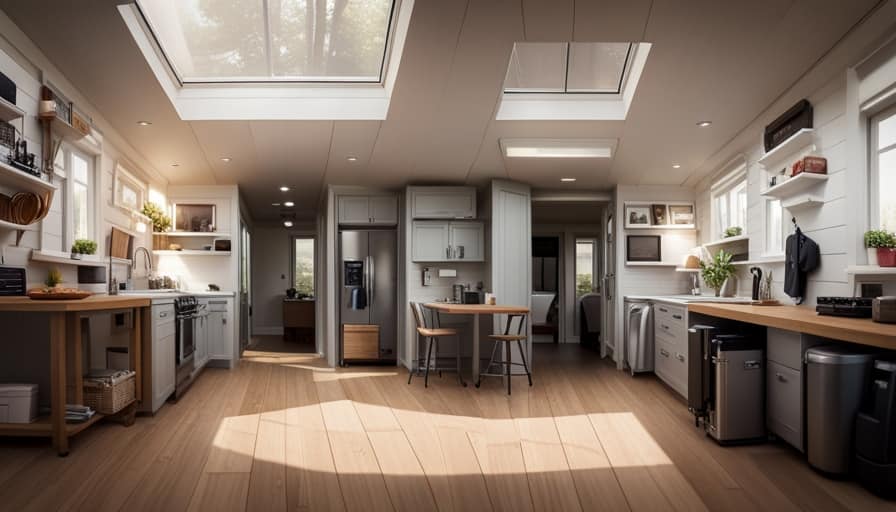
-
Social media influencers: Influencers play a significant role in promoting the tiny house lifestyle. Their posts and stories showcasing their own tiny homes and experiences inspire and educate a wide audience.
-
Online communities: Online platforms dedicated to the tiny house movement provide a space for enthusiasts to connect, share ideas, and support one another. These communities foster a sense of belonging and empower individuals to pursue their tiny house dreams.
Through social media, the tiny house movement has gained momentum, reaching people worldwide and creating a global community of individuals passionate about sustainable living.
Frequently Asked Questions
What Are the Average Costs Associated With Building and Maintaining a Tiny House?
On average, the costs of building and maintaining a tiny house can vary depending on factors such as size, materials, and location. Financing options like loans or personal savings can help cover these expenses.

Are There Any Legal Restrictions or Regulations When It Comes to Living in a Tiny House?
When it comes to living in a tiny house, there can be legal implications and zoning regulations to consider. For example, some areas may have restrictions on where you can park or live in a tiny house.
How Do Tiny House Dwellers Handle Basic Utilities Such as Water, Electricity, and Sewage?
When it comes to off grid living in a tiny house, handling basic utilities can be a challenge. Tiny house dwellers often rely on alternative methods such as rainwater collection, solar power, and composting toilets for sustainable living.
What Are the Challenges and Benefits of Living in a Tiny House With a Family or a Pet?
Living in a tiny house with a family or pet has its challenges, like limited space and privacy. However, the benefits of a minimalistic lifestyle, such as lower expenses and a closer bond with loved ones, make it worthwhile.
Are There Any Specific Design Considerations or Techniques That Are Commonly Used in Tiny House Construction to Maximize Space?
To maximize space in tiny house construction, innovative storage solutions and multi-functional furniture are commonly used. It’s like fitting a puzzle together, finding clever ways to store belongings and make every inch count.

Conclusion
In conclusion, the tiny house movement has evolved from a response to the financial crisis of 2008 into a global phenomenon.
Through the simplicity movement, innovators and trailblazers have embraced minimalism and downsizing, while also prioritizing sustainable living and environmental consciousness.
Social media has played a crucial role in spreading awareness and connecting like-minded individuals worldwide.
The tiny house movement is a testament to our ability to adapt, simplify, and prioritize our values in the face of adversity.
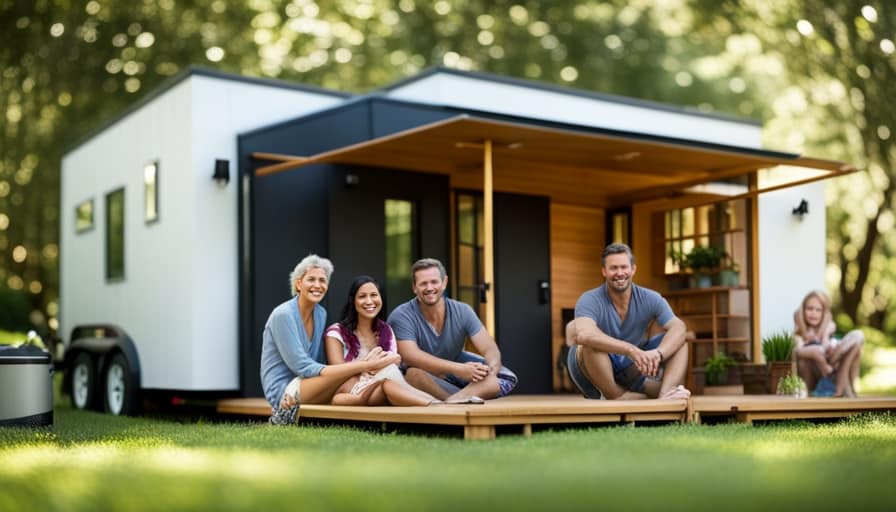
I’m Theodore, and I love tiny houses. In fact, I’m the author of Tiny House 43, a book about tiny houses that are also tree houses. I think they’re magical places where imaginations can run wild and adventures are just waiting to happen.
While tree houses are often associated with childhood, they can be the perfect adult retreat. They offer a cozy space to relax and unwind, surrounded by nature. And since they’re typically built on stilts or raised platforms, they offer stunning views that traditional homes simply can’t match.
If you’re looking for a unique and romantic getaway, a tree house tiny house might just be the perfect option.
Sustainable Designs
How Do I Get Rid of Tiny Black Ants in My House

Are you fed up with pesky little black ants invading your home? Don’t worry, I’ve got you covered! This article will provide effective strategies to eliminate these irritating pests for good.
From natural remedies to chemical solutions, I’ll provide you with thorough and detailed information on how to eliminate these pests.
Say goodbye to those tiny black ants and hello to a pest-free home!
Key Takeaways
- Look for ants in cracks, crevices, sinks, windows, and doors.
- Use natural remedies like vinegar and water sprays, borax and sugar baits, and essential oils to repel ants.
- Consider using chemical insecticides and ant baits for severe infestations.
- Take preventive measures such as cleaning up spills, storing food properly, sealing cracks, and maintaining a clean environment to prevent future infestations.
Identifying the Types of Tiny Black Ants
I’ve always had trouble figuring out which types of tiny black ants are invading my house. It’s important to identify the specific species of ants in order to effectively eliminate them.

There are several common hiding spots where these ants may establish their nests. Look for them in cracks and crevices in walls, underneath sinks, and around windows and doors. Inspect your pantry and kitchen cabinets for any signs of an ant infestation, such as trails of ants or small piles of food debris.
Additionally, check for ant trails leading to outdoor areas, as these ants may be entering your house from outside. By accurately identifying the types of tiny black ants and locating their hiding spots, you can better target your efforts to eliminate them from your home.
Understanding the Behavior and Habits of Tiny Black Ants
Tiny black ants have a strong preference for sugary and greasy foods, making kitchens and pantries their primary targets. These tiny insects are known for their organized behavior and intricate nesting habits. Understanding their behavior is crucial in effectively implementing ant control methods and preventing infestations. Tiny black ants typically establish their nests in a variety of places, such as cracks in walls, under sinks, in electrical outlets, and even in potted plants. They are also known to create satellite colonies near their main nest, which can make eradication more challenging. To better understand their nesting habits, here is a table outlining some common nesting areas:
| Common Nesting Areas |
|---|
| Cracks in walls |
| Under sinks |
| Electrical outlets |
| Potted plants |
With this knowledge of their nesting habits, we can now explore natural remedies to get rid of these persistent tiny black ants.
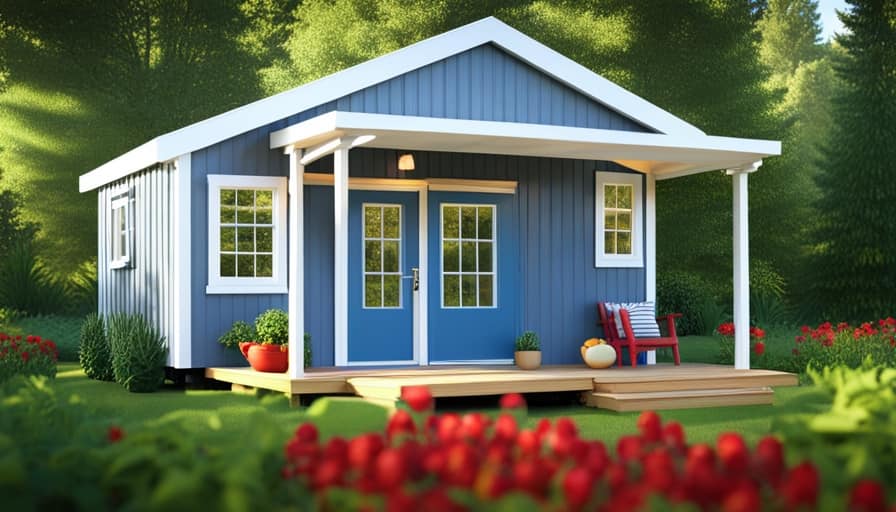
Natural Remedies to Get Rid of Tiny Black Ants
While there are several options available, one effective natural remedy to get rid of tiny black ants is using a mixture of vinegar and water as a homemade ant spray. Ants rely on scent trails to find food sources, and vinegar disrupts these trails, making it difficult for ants to navigate.
To create a homemade ant spray, mix equal parts vinegar and water in a spray bottle and apply it directly to ant trails, entry points, and areas where ants are commonly seen.
Additionally, there are other natural remedies that can help control ants in your house. Some homemade ant baits, such as a mixture of borax and sugar, can be placed near ant trails to attract ants and kill them. Essential oils like peppermint, cinnamon, and tea tree oil also have strong scents that ants dislike, making them effective natural repellents.
Placing a few drops of these essential oils on cotton balls and leaving them near ant entry points can help deter ants from entering your home.

Chemical Solutions for Eliminating Tiny Black Ants
To effectively eliminate tiny black ants in my house, I can use chemical insecticides or ant baits. While natural remedies are a popular choice for pest control, sometimes chemical solutions are necessary for more severe infestations. Chemical insecticides are designed to kill ants on contact, while ant baits work by attracting ants to consume a toxic substance and take it back to their colony, effectively eliminating the entire population. It is important to choose the right chemical solution based on the severity of the infestation and the specific species of ants. Some commonly used chemical insecticides for ant control include pyrethroids, carbamates, and organophosphates. It is important to carefully read and follow the instructions on the product label to ensure safe and effective use. Here is a table comparing the effectiveness of different chemical solutions:
| Chemical Solution | Effectiveness |
|---|---|
| Pyrethroids | Highly effective |
| Carbamates | Moderately effective |
| Organophosphates | Highly effective |
| Boric acid | Moderately effective |
| Fipronil | Highly effective |
Preventing Future Infestations of Tiny Black Ants
Luckily, I can take proactive measures to prevent future infestations of those pesky tiny black ants in my house. By maintaining a clean and hygienic living environment, I can significantly reduce the chances of ants invading my home. Here are three effective strategies to keep those tiny black ants at bay:
- Clean up food spills and crumbs immediately, ensuring that countertops, tables, and floors are free from any food debris.
- Store food in airtight containers to prevent ants from being attracted to the scent.
- Seal any cracks or entry points where ants can enter the house, such as gaps around windows, doors, and pipes.
In addition to maintaining cleanliness, using ant deterrents and barriers effectively can also help prevent future infestations. Applying ant repellents or creating barriers with substances like cinnamon, vinegar, or citrus peels can discourage ants from entering my home. Regularly inspecting and maintaining these preventive measures will go a long way in keeping those tiny black ants from making themselves at home in my house.
Frequently Asked Questions
Can Tiny Black Ants Cause Any Health Issues or Allergies?
Tiny black ants can indeed cause health issues and allergic reactions. Their presence in the house can lead to contamination of food and surfaces, triggering allergies and potentially spreading bacteria.

How Long Does It Usually Take for Natural Remedies to Effectively Get Rid of Tiny Black Ants?
On average, natural remedies take about a week to effectively eliminate tiny black ants. Common remedies like vinegar, lemon juice, and cinnamon can be used strategically to disrupt their scent trails and deter them from returning.
Are There Any Specific Types of Food or Substances That Attract Tiny Black Ants?
Specific types of food that repel tiny black ants include cinnamon, lemon juice, and vinegar. To prevent ants from entering the house, seal all cracks and crevices, keep food tightly sealed, and clean up spills promptly.
Can Chemical Solutions for Eliminating Tiny Black Ants Harm Pets or Children?
Chemical solutions for eliminating ants may pose a risk to pets or children if not used properly. It’s important to follow instructions and consider alternative methods, such as natural repellents or sealing entry points.
Are There Any Signs or Indicators That Can Help Identify if My House Is at Risk of Future Infestations of Tiny Black Ants?
In my experience, I’ve learned that paying attention to signs like ant trails, small openings, and food sources can help identify potential future ant infestations. Taking preventive measures, like sealing cracks and storing food properly, can keep ants out of the house.

Conclusion
After identifying the types of tiny black ants and understanding their behavior and habits, it’s crucial to eliminate them using natural remedies or chemical solutions.
By taking preventive measures, such as keeping the house clean and sealing entry points, future infestations can be avoided.
Remember, an ant-free home is achievable with the right knowledge and actions.
So, let’s get rid of those tiny black ants and enjoy a pest-free environment.
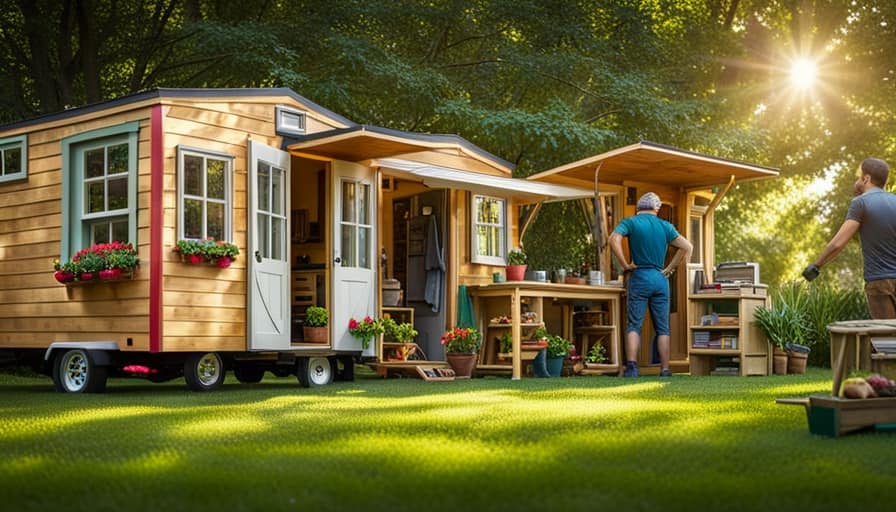
I’m Theodore, and I love tiny houses. In fact, I’m the author of Tiny House 43, a book about tiny houses that are also tree houses. I think they’re magical places where imaginations can run wild and adventures are just waiting to happen.
While tree houses are often associated with childhood, they can be the perfect adult retreat. They offer a cozy space to relax and unwind, surrounded by nature. And since they’re typically built on stilts or raised platforms, they offer stunning views that traditional homes simply can’t match.
If you’re looking for a unique and romantic getaway, a tree house tiny house might just be the perfect option.
-

 Beginners Guides2 weeks ago
Beginners Guides2 weeks agoHow To Buy A Tesla Tiny House
-

 Energy Efficiency2 months ago
Energy Efficiency2 months agoBest Tiny Homes For Cold Climates
-

 Beginners Guides1 week ago
Beginners Guides1 week agoTiny House Nation Where Are They Now Stephanie
-

 Tiny House Resources (e.g., legalities, cost, insurance, FAQs)2 months ago
Tiny House Resources (e.g., legalities, cost, insurance, FAQs)2 months agoDo Tiny Homes Need Planning Permission?
-

 Beginners Guides3 weeks ago
Beginners Guides3 weeks agoFrom The Show Tiny House Nation How Many Keep Their Tiny House?
-

 Beginners Guides2 months ago
Beginners Guides2 months agoUsing a Climbing Net For Treehouse Construction
-

 Beginners Guides2 months ago
Beginners Guides2 months agoHow to Build a Treehouse Without Drilling Into the Tree
-

 Beginners Guides3 weeks ago
Beginners Guides3 weeks agoTiny House Nation Who Pays For The Houses












